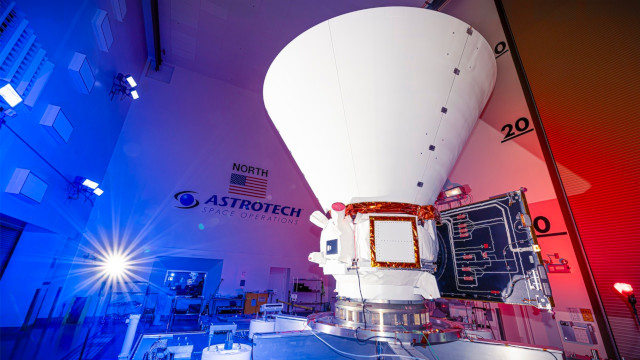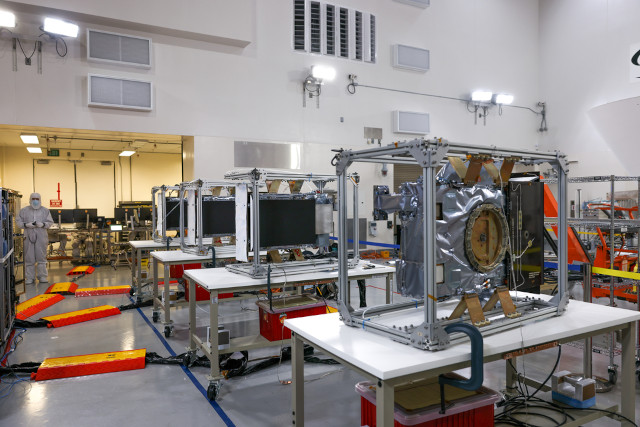
A few hours ago, the SPHEREx space telescope and the PUNCH satellites, two NASA astronomy missions, blasted off atop a SpaceX Falcon 9 rocket from the Vandenberg base. After about 42 minutes, SPHEREx successfully separated from the rocket’s last stage, and about 10 minutes later, the PUNCH satellites also separated, within about a minute. Both missions will operate from a Sun-synchronous orbit at an altitude of 700 kilometers for SPHEREx and 570 kilometers for PUNCH.
The Spectro-Photometer for the History of the Universe, Epoch of Reionization and Ices Explorer (SPHEREx) mission aims to conduct an astrophysical survey with a global observation of the sky. It’s a space telescope designed to observe hundreds of millions of galaxies and other objects to map the cosmos in 102 wavelengths the optical and near-infrared bands.
The SPHEREx spectroscope will allow the detection of chemical compounds thanks to the “signatures” they leave in electromagnetic emissions, and this also includes potential building blocks for life. This type of instrument also helps measure the distance of objects, in this case, in particular, the galaxies observed.
The mapping that will be conducted by SPHEREx will help better understand the distribution of matter in the cosmos. This is an important objective to reconstruct what happened in the first fractions of a second after the Big Bang. Tiny differences in the distribution of matter were amplified by what is called cosmic inflation, which according to astrophysicists, determined the current large structures that exist. Obtaining information on that phase of the history of the universe that lasted very little but was crucial in its evolution will constitute an important step in cosmological studies.

The Polarimeter to Unify the Corona and Heliosphere (PUNCH) mission is composed of four small satellites with a mass that at the time of launch is about 40 kilograms each. From the Earth’s orbit, they will study the Sun and in particular the transition from the solar corona to the solar wind. This will help better understand the processes at work, which can have significant effects within the solar system, which means on Earth as well.
Many important details of the processes at work in the solar atmosphere are still unclear. For this reason, in recent years, several satellites and space probes have been launched that have started providing some answers, in some cases, even approaching the Sun to conduct detections. The PUNCH satellites will observe the Sun from afar but continuously, working together as a single virtual instrument to obtain a wide field of view centered on the Sun.
NASA has confirmed the acquisition of signals from all spacecraft. In the coming weeks, the team that runs the SPHEREx space telescope will conduct calibration and cooling operations to bring it to the temperatures required for its two-year primary mission. The PUNCH satellites will go through a 90-day commissioning period and then begin their primary mission, which will also last two years.


